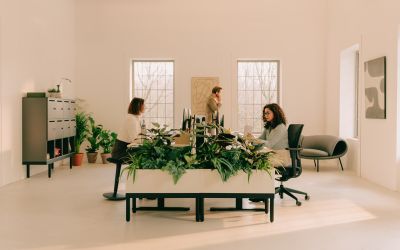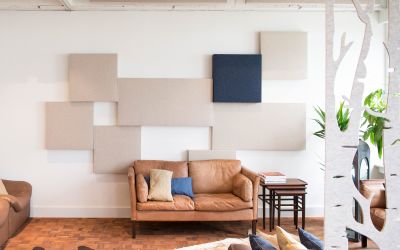
Offices that grow with you: Why flexibility is the new standard.
The office of the future is more than just a workplace – it’s a strategic tool. How can we design spaces that enable change while providing clarity? A closer look at what modern work environments truly need.
Work in motion – Why new ways of working demand new answers.
Standing still is no longer an option. As work models evolve, office spaces must keep pace. Hybrid work, rotating project teams, the growing need for quiet zones and collaborative areas – all of this is pushing traditional office layouts to their limits. The result? Workspaces that no longer reflect the way we actually work.
But what does that mean for planning? It's no longer about square meters alone. What really matters is how flexibly a space can be used, how quickly setups can be changed, and how to create an atmosphere that makes people want to come back to the office.
Flexibility is the new foundation.
The most important factor: adaptability. Today’s workspaces must be designed to respond to changing needs – not just in theory, but in practice. That means modular furniture systems that work without costly renovations. Mobile elements that redefine work zones in an instant. And pieces that serve more than one purpose: providing storage while zoning a space, offering retreat and focus, or doubling as meeting and lounge areas.
Ergonomics also play a key role. A flexible workspace is one that adapts to the individual. Height-adjustable desks, versatile seating, and smart accessories don’t just make movement possible – they encourage it.



Why design is more than just decoration.
Design has impact – and that’s not just a matter of taste, but of strategy. Colors, materials, and lighting influence orientation, employee well-being, and identification with the company. Timeless color palettes, natural materials like wood or steel, and subtle, muted accents bring calmness to a space without making it feel lifeless. Well-considered design creates atmosphere – and atmosphere creates a sense of belonging.
Acoustics and focus – The invisible advantage.
One often underestimated factor in modern office planning is acoustics. But we know by now: those who want to focus need quiet – or at least sounds that don’t distract. Especially in open spaces, smart acoustic solutions can be the difference between constant disruption and true flow.
This includes sound-absorbing wall panels, zoning furniture with acoustic properties, or ceiling elements that feel light visually while improving the overall soundscape. It’s not just about reducing noise – it’s also about something essential: speech intelligibility. Whether in meeting rooms, hybrid calls, or casual chats between colleagues – clear communication requires acoustic clarity.
With the right acoustics, the office becomes a place where ideas are born quietly – and spoken out loud with confidence.



Conclusion: The office of the future adapts to people – not the other way around.
The major transformation of the working world doesn’t call for one-size-fits-all solutions. It calls for smart, customized answers. The modern office is no longer just a location – it’s a tool: for company culture, productivity, and transformation.
Those who plan spaces today should plan with tomorrow in mind. With systems that evolve. With details that do more. And with concepts that don’t prescribe everything – but make anything possible.